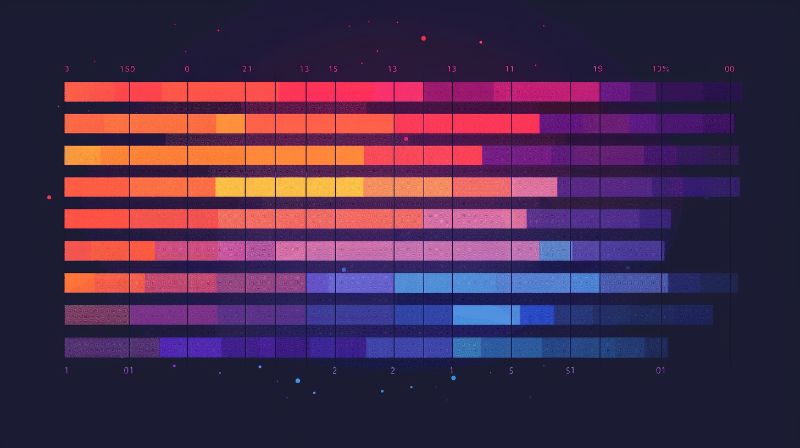Creating Color Steps for Heatmaps
Learn how to use stepped gradients to create clear and informative heatmaps, enhancing your data visualizations with distinct color bands.
3 min read · May 30, 2024
Heatmaps are a powerful tool for visualizing data, showing patterns and trends through color intensity. To effectively convey information, heatmaps often use stepped gradients, where distinct color bands represent different data ranges. This article will guide you through creating color steps for heatmaps and how our Gradient Generator can help you achieve clear and informative visualizations.

Understanding Stepped Gradients in Heatmaps
Unlike smooth gradients that transition seamlessly from one color to another, stepped gradients use distinct color bands to represent specific data ranges. This approach is particularly useful in heatmaps where you need to highlight discrete intervals or categories in your data.
- Applications: Geographic maps, data analytics, user behavior tracking.
- Benefits: Enhanced readability and clear data differentiation.

Selecting Colors for Stepped Gradients
Choosing the right colors for your stepped gradient is crucial for creating an effective heatmap. The colors should contrast enough to clearly define each step but also be harmonious to avoid visual clutter.
- Color Ranges: Use a spectrum that moves from cool to warm colors to indicate low to high values.
- Contrast: Ensure sufficient contrast between adjacent steps to make each data range distinct.
- Accessibility: Consider colorblind-friendly palettes to make your heatmaps accessible to a wider audience.

Applying Stepped Gradients to Heatmaps
Using our Gradient Generator, you can create custom stepped gradients tailored to your data visualization needs. Here’s how you can apply stepped gradients to your heatmaps:
- Define Data Ranges: Determine the data intervals you want to represent with each color step.
- Select Base Colors: Choose the starting and ending colors for your gradient.
- Set Number of Steps: Specify the number of steps in your gradient to match the data ranges.
- Generate Gradient: Use the tool to generate the stepped gradient and apply it to your heatmap.
Practical Examples of Heatmaps with Stepped Gradients
Stepped gradients are widely used in various types of heatmaps to illustrate data patterns effectively. Here are some examples:
- Geographical Heatmaps: Visualize temperature variations or population density with distinct color bands.
- User Behavior Heatmaps: Highlight areas of high user interaction on websites or applications.
- Data Analytics Heatmaps: Show sales performance or other metrics across different segments.

Conclusion
Stepped gradients are an excellent choice for creating clear and informative heatmaps. By carefully selecting and applying these gradients, you can enhance the readability and effectiveness of your data visualizations. Use our Gradient Generator to create custom stepped gradients and elevate your heatmap designs today.
Start creating effective heatmaps with custom stepped gradients. Try our Colors Gradient Generator now and transform your data visualizations.